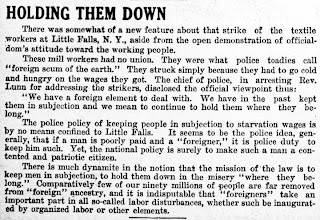Foreword
One sunny day, pre-COVID-19, while walking in my neighborhood, I saw a group of young people in the local park playing soccer. A break was in order, so I found a patch of grass and took a seat to watch. Peppering the sidelines were a variety of onlookers, mostly parents and siblings I’d guessed, but there was also a young boy from the neighborhood who was there with what seemed a single intent—to cheer. He didn’t cheer for one side or the other, he simply cheered. He ran up and down the sidelines with the players and when anyone scored or made a great play, he cheered. His behavior never wavered, even lasting for several enthusiastic minutes after the final whistle. And along with his cheers came laughter. He laughed and cheered, cheered and laughed. It was puzzling at first, but as my mind and heart opened, I realized his behavior was not a misguided youthful response—he had figured out a far more important truth. While most attendees supported one side or the other and enjoyed only part of the game, he had found a way to appreciate every moment. With no investment in a winner, every success was reason to celebrate. How about that as a path to joyous and fulfilled living?
Our search for reasons to celebrate and be joyful in light of recent events has been challenging. We face change and disruptions that were unimaginable only a short time ago. EVERYONE is affected, which weighs heavily on our collective consciousness. In June of 2020, during a particularly discouraging stretch, the thought occurred that although I couldn’t change what life was offering, I could change my focus. I began to search online for new voices, new faces, and new ideas on how to move forward in our present difficulties. It was stirring to find the internet alive with people and organizations promoting positive ways of being, and offering solid ideas for change and growth. One thought, repeated often in cyberspace, finally caught my attention—be the change. It was time to stop looking for others to give me hope, and be a part of bringing hope to the forefront. But honestly, I wasn’t sure what I could do. After some effort reviving “lockdown” brain cells from their stupor, I considered that I could use my skills as a writer and publisher to share the stories others had to offer. A collection focused on hope and healing had potential because, judging by responses on social media, the world was starved for both.
My first outreach was to friend and fellow author, Dr. Veronica Esagui, who was enthusiastic about the idea and anxious to help. We shared our intentions with friends and family, posted our call to authors on social media and other venues and waited for a response.
Our request was for articles that showed who we are without hate, anger or rage. Stories that highlighted compassion and healing to move us forward and perhaps confront the painfully unresolved issues in our society that have become clear. We asked for stories that remind us of our boundless inner strength and the gifts we can offer because of it. We welcomed all genre, and, remarkably, many were submitted!
What will you find in this collection? One of our authors introduces you to an intergalactic granny who joins with protestors to save their planet. Another author, who lost loved ones to heart disease, shares her experience and knowledge on the advantages of a plant-based diet. From another, readers can explore an informative and enlightening introduction to the music of Gustav Mahler. Or perhaps you’ll find comfort in what an octogenarian shares about how her own life lessons enable her to thrive in this time of global pandemic. There are stories of a healing present and a healing future. Stories of resilience and hope. Stories that suggest ways to save the planet and the animals with which we share it. And if those aren’t enough to entice you, several poets share their inspirations in ways that only poets can.
With the uniqueness of our times in the forefront, I was aware that it took a good deal of inner fortitude to focus and write for this anthology. Because of that, I am doubly grateful to those who contributed. Thank you! Thank you also to Catherine and Jude for positive feedback and support during the mulling stages and beyond.
My natural optimism has been tested in these complicated times, but in compiling this anthology, I was reminded that giving in to darkness never serves anyone well. I’m glad to have had the opportunity to read and share the caring and healing words of our contributors. In the end, I guess I did look to others to find hope, but perhaps finding hope in each other is the real lesson after all. My hope is that you will find yours. And if you need me, I’ll be on the sidelines, laughing and cheering your every goal, your every success and your every effort.




























